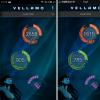High Dynamic Range (better known as HDR) photography is a popular and often misunderstood imaging technology. In this article, we'll take a look at what HDR is, learn how to use it for great results, and throw in some inspiring examples.
Maximum dynamic range
Dynamic range is a measure of the signal-to-noise ratio.
Translator's note - simply put, the dynamic range determines how wide the range of brightnesses the camera is able to transmit without loss in one picture.
Any photo has a lot of tones: some areas are bright, then there are a series of shades of gray, and then there are places surrounded by shadow. Sometimes the difference between light and shadow can be incredibly sharp; we call this "high contrast".
Your camera is optimized for limited dynamic range. Details above and below this limit will be brightened to bright white or noise suppressed in dark areas. The amount of difference between black and white that a camera can capture determines the many photographic decisions you need to make to get a successful shot.
It is difficult to expose everything correctly every time: in some pictures there are shades of black And white, exceeding the capabilities of the camera. In such high-contrast images, compromise is often the right decision. You choose an exposure that will "protect" shadows or highlights, whichever is more important.
However, in some situations it is possible to use clever post-processing techniques to take pictures that go beyond the standard capabilities of the camera: we use HDR.
Poor, misunderstood, maligned HDR
If you compensate and try to achieve a high dynamic range, you can often end up with unnatural, oversaturated images. Unfortunately, that's where HDR's bad reputation comes from. Usually the abuse of this method is manifested in the shooting of architecture and partly in industrial tourism; in these spheres he has become something of a joke and the subject of much ridicule.
Tone mapping
I heard somewhere that tone mapping and HDR are interchangeable, but they are not the same thing. Tone mapping is a technique used for HDR photography.
Tone mapping increases contrast, but at the same time (theoretically) preserves detail and color. This can be done in two ways, globally, where each pixel is mapped equally, or locally, where the algorithm is tuned for each pixel depending on the surrounding tones and the image itself.
With light to moderate use, you can improve the picture. If used incorrectly, you will exacerbate problems such as noise and dust spots on the sensor, creating contrast rings and unnecessary glare. A delicate balance is required here.
What you need
HDR effect can be achieved with any equipment, since its essence lies in post-processing. Ideally, you should have a camera capable of shooting in RAW format to get the most out of your shots.
Exposure bracketing
AEB is another useful feature. This abbreviation stands for automatic exposure bracketing(Automatic Exposure Bracketing) and sets the camera so that you can take a picture with several stops of exposure. For example, you can set options EV: -2, 0, +2. With these settings, pictures will be taken two stops lighter and two stops darker.
The idea is that you get the best possible chance of getting the first shot with properly exposed shadows, the second with great midtones, and another with the right highlights. If you combine them, in theory you should get a perfectly exposed photograph with a wide dynamic range.
This can be achieved without the function AEB, but then you will need to manually adjust the settings. It also increases the risk that the camera will move or something in the frame will change during the shooting.
Tripod
This is also optional, but very useful. A tripod will allow you to hold the camera still while it takes pictures at different exposures. Even for photographers with a steady hand, it is quite difficult to keep the camera steady for several shots.
HDR post-processing software
Prices for software that can properly blend an HDR image vary greatly. The popular Photomatix program is available in two versions, starting at $39. If you already have Photoshop or Lightroom, you can use both to get the job done. If you don't have any of these and prefer the free options, there is open source software called . This program has several blending modes and is a great starting point. You can also take advantage of the very popular (and recently free) Nik Collection, which includes the ability to mix different exposure or tone mapping settings from a single exposure shot. However, this is not true HDR and the same amount of detail can be obtained when making corrections in RAW format.
Inspiration
Downtown Chicago
I can’t say for sure that this HDR shot looks natural, but I also can’t call it picturesque and oversaturated. I really like the limited color palette and the warmth that surrounds the buildings. To me, this shot looks almost like a graphic designer's interpretation of the city, and the lack of people on the street only adds to its edge.
Red mountains at sunset

You can bet that the original shot(s) had very dark shadows in the area of trees and cliffs, as well as strong highlights in the sky. In the final image, everything is well balanced and the details that have appeared in the sky due to this look just fine. To me the greens and reds could be softer - not as saturated and just a little bit darker - but other than that it's a great shot.
Irish cliffs

While the "avoid moving subjects" advice is usually very helpful in HDR shooting, I think the wind-brushed grass worked out great here. It looks soft and gives the illusion of movement - I'm sure you can almost feel the fresh breeze blowing over the top of this cliff!
City lights at dusk

Shooting compositions that include lights is my favorite thing when it comes to getting the most out of dynamic range. The warm glow on the water looks very cute, and the city is sharp enough to stand out and attract attention without looking unnatural.
Sunset in St. Louis

Sunrises and sunsets are great times of the day to show different colors and tones. Using multiple shots at different exposures will give you great range, partly because the light changes all the time.
Compromise
Just like blending or tone mapping, some presets and effects can give your shots an HDR effect. Below is one of my photos. The raw RAW file looks pretty flat.

Image: Marie Gardiner
I used Sodasong's Dramatic Landscape Action Photoshop action set. Among other things, there is an HDR effect. Obviously this can't be true HDR since no blending or tonal mapping is involved, but this effect claims to replicate the result of its operation.
When I ran the action, it created a mask so I could hide the unwanted areas and then added layers for sharpening, brightness, contrast, and color. All of them are non-destructive, so you can return to the original photo at any time. This also means that you can adjust each layer until you get the desired result.
I decided to leave the original settings so that you can see the result immediately after running the action.

Result after running
You can see how we've boosted the colors as well as emphasized the sharpness and contrast. Among other things, the plugin lightened the highlights and darkened the shadows.
The left side is the before, the right side is the after.

Result before (left) and after (right)
This is a very good result for a one-click action. The difference is barely noticeable, but a weak result is ideal when it comes to HDR. You can consider that you have successfully applied HDR if the result looks normal, harmonious and natural.
If you're short on time or just want to tweak your shot, the action is perfect: it's quick to launch, makes light adjustments, and stays in line. This is exactly what you need - the action allows you to freely make your edits.

Technique
Exposure setting
You'll need at least two shots, but it's best to have three: the first with a normal exposure, the second for the shadows, and the third for the highlights. Setting the bracketing mode ( AEB) cameras and usage high-speed mode (burst mode) will allow you to easily get the shots you need.
Remember that you can't change settings between shots. Ideally, this means that you should shoot in manual mode so that the camera does not change ISO or aperture settings.
Avoid moving objects, which, after merging photos, can become phantoms. Even tree branches swaying in the wind will cause problems, so pay attention to the subject and what is happening around.
If you're going to be taking the same shots one after the other, it's helpful to separate them with a photo of something else so you can easily determine which images to group. I usually photograph my hand, so I can easily see the separation even among the thumbnails.
Don't Overdo Your Exposure
When working with AEB, don't set a big difference unless you're taking a lot of shots. For most situations, three shots are enough to get a great HDR effect. Avoid extreme combinations like [-5, 0, 5]; instead, choose a difference of one, two, or three stops. If you take more pictures, you can use higher values.
Again, one-stop or two-stop bracketing is usually enough, especially for RAW format. When photographing people, it may be worth taking pictures with a difference equal to one. For high contrast photos, such as skyscrapers or landscapes, you can increase the difference to two or three.
Mixing photo
As I said earlier, each program capable of processing HDR photos has different features and options, but the general approach is always the same.
The software will ask you to manually enter exposure values for each shot if it cannot automatically recognize it. Also, such software usually has functions Chromatic aberration corrections(Correct Chromatic Abberation), Noise reduction(Reduce Noise) and Phantom effect cuts(Reduce ghosting). All this can be very useful for solving common problems when working with HDR, so feel free to play with the sliders to see the positive effect.
Once you've adjusted the settings to your liking, the program will blend the shots into a single 32-bit image that will most likely look terrible. This is normal, don't worry. Next up is tone mapping. In this step, you'll make adjustments to fine-tune your photo - choose whether to enhance details, where to reduce or increase saturation, and adjust the compression.
Potential Issues
Motion
Since you need at least three shots to get an HDR image, it's wise to avoid motion. If something is moving, even tree branches in the wind, it is obvious that the subject will turn out differently in photographs and end up looking blurry or strange.
Too high saturation
If the scene is full of high contrast colors, using HDR will enhance this, often to the detriment of the photo. It may be necessary to desaturate the image after processing to remove excess saturation. Also with areas of low contrast or color, you can end up with a flat, blurry look.
Computer speed
If you are processing a lot of large RAW files, your computer may start to slow down. Make sure that the scheduled updates do not interfere with processing and that there is enough free RAM to work with. Modern computers are great at editing large amounts of photos, but there is still a risk that the program may freeze if the requests are too serious.
- Use a tripod to keep the camera still.
- Turn on the mode AEB.
- Don't set too much exposure difference. Choose no more than two or three stops.
- Take more shots for a wider dynamic range.
- Use HDR software tools and work smart to avoid the pictorial look often associated with HDR.
Resources for further study
How to take long exposure HDR photography: Long exposure HDR photography is the same as regular HDR photography, but it uses a longer exposure time. This creates a very specific effect. Objects such as water or clouds become clearer due to slow shutter speeds blurring their movement. At the same time, for the correct exposure of, say, the night sky, a high shutter speed is needed.
HDR Slow Motion with SNS-HDR Pro : How to shoot and edit HDR slow motion video.
conclusions
HDR photography is often underestimated and photographers can be a bit nerdy when talking about it. Don't let these opinions put you off; when used properly, this technique can bring amazing results. In the best shots, it’s even hard to notice the HDR work.
The key to great high dynamic range images is to capture the best possible source shots. This means avoiding moving subjects (otherwise you can get a ghost effect) and take more photos with not very large exposure differences, getting the most out of the dynamic range.
When mixing, don't stop at the standard settings. They are a great start, but no more: it's worth playing around with sliders until you start to feel comfortable and understand what they do and what effect they help to achieve. Remember, less is more, and while you're trying to get the most out of tonal ranges, it's worth keeping the effects of saturation, structure, and sharpening to a minimum for a realistic look.














